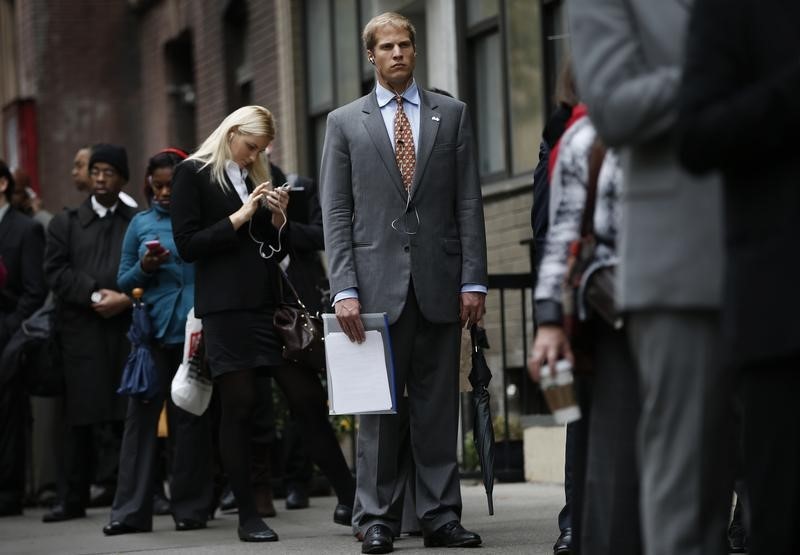Investing.com - Nonfarm payrolls (NFP) rose by 157,000 in July, according to official data released on Friday.
That was lower than the consensus estimate for the creation of 193,000 jobs and the 219,000 positions that the ADP report indicated on Wednesday.
The previous month’s reading of NFP was revised to 248,000 from the 213,000 registered initially.
Additionally, the private sector created fewer new job contracts than expected in July with a total of 170,000.
Analysts had forecast the creation of just 189,000 new private sector jobs.
June’s number was revised to an increase of 234,000 private nonfarm payrolls, from the prior reading of 202,000 jobs in the private sector.
Government payrolls decreased by 13,000 last month, compared to the prior creation of 14,000 public positions.
June’s data on public positions was an upward revision from the initial reading of the creation of 11,000 public positions.
The jobless rate fell to 3.9% from 4.0% as expected.
The U-6 unemployment rate, that includes those workers who are working part-time for purely economic reasons, fell to 7.5% in July from the prior 7.8%.
The participation rate held steady at 62.9%.
Average hourly earnings advanced 0.3% month-on-month in July, in line with forecasts.
That was higher than June’s increase of 0.1% which was revised down from an initial gain of 0.2%.
On an annualized basis, wage inflation grew 2.7% in July, in line with expectations for it to hold steady at the prior month’s reading.
The increase in wages is being closely monitored by the Federal Reserve for evidence of diminishing slack in the labor market and upward pressure on inflation. Economists generally consider an increase of 3.0% or more to be consistent with rising inflation.
Average weekly hours clocked in at 34.5 last month. That was in line with the forecast.
June’s reading was revised up to 34.6 from the prior 34.5.
Stock market reaction was muted with U.S. futures still pointing to a flat open.
The dollar extended losses against major rivals with the U.S. dollar index passing from 94.98 to 94.88 by 8:40 AM ET (12:40 GMT).
A weaker greenback led to gains in gold futures which had been slightly lower just before the report and were now up 0.18% at $1,222.30 a troy ounce.
